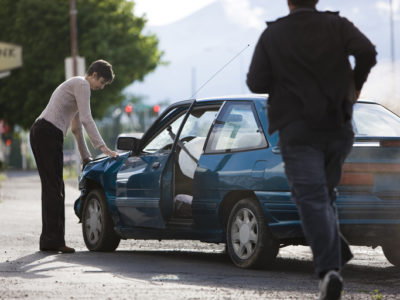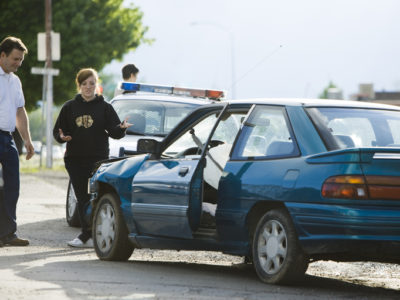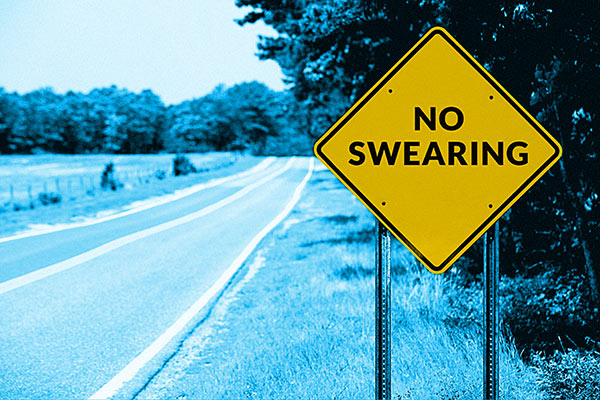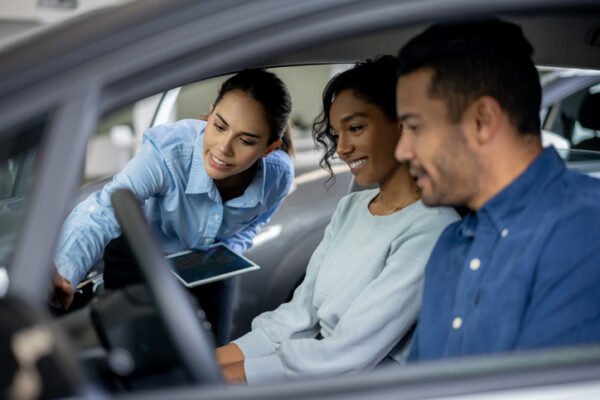Witnessing a car accident first-hand requires a calm, cool, and collected response under traumatic circumstances. Your course of action will largely depend on the severity of the crash and the extent of the injuries, but there are some general guidelines to keep in mind. By following these tips, you’ll be better prepared to help your fellow drivers until the professional emergency responders arrive.
Ensure Your Safety First
If you are driving when you spot a car crash, pull over to the side of the road at least 100 feet from the scene and put on your hazard lights. You want to give enough distance so you don’t put yourself in danger of broken glass, leaked fuel, or flames.
Call 911
 Never assume that someone else already called 911. Even if the wreck doesn’t appear severe, the authorities should be notified. Let the 911 operator know you witnessed a car accident, the location, number of people involved, and any other pertinent details.
Never assume that someone else already called 911. Even if the wreck doesn’t appear severe, the authorities should be notified. Let the 911 operator know you witnessed a car accident, the location, number of people involved, and any other pertinent details.
Check On The Victims

Once you’ve ensured that it’s safe to approach the scene, check on the condition of the crash victims to make sure they are okay and offer help, if you are able. While this can be an emotionally taxing time, try to stick to the facts and remember that this is not the time to assess who is at fault for the accident or make judgments on what the other driver must have been thinking. A good rule of thumb is to never admit fault at the scene. Unless there’s a risk of the vehicle catching fire, do not under any circumstances move an injured person. Despite your best intentions, you could accidentally make the injury worse. Let the trained medical professionals tend to the injuries, but you can provide comfort by reassuring victims that help is on the way.
Stabilize The Vehicles (If You Can)
If the accident is minor, ask the driver to put the impacted vehicle in “park” and turn off the ignition. This will eliminate the risk of fire, especially since chances are good that the crash has caused an oil, fuel or coolant leak. If it’s safe to do so, enlist help to move the car out of further harm’s way and to leave space for other vehicles and emergency responders. If that’s not possible, set up flares or traffic triangles to warn other drivers of the accident.
Give A Statement & Provide Your Contact Information
 When the police arrive, provide the relevant facts and your contact information. In the days and weeks following the event, you may be contacted as a witness by legal and medical authorities and/or insurance claims agents. Be honest, factual, and consistent with your statements.
When the police arrive, provide the relevant facts and your contact information. In the days and weeks following the event, you may be contacted as a witness by legal and medical authorities and/or insurance claims agents. Be honest, factual, and consistent with your statements.
Car accidents can be upsetting for the victim and the bystander alike. The best way to deal with an accident is to stay on the scene and report what you’ve seen. Only exit your vehicle to render aid if it is safe to do so. Your clearheaded actions to safely assist or protect the victims until emergency assistance arrives can make an enormous difference in the overall outcome.
Being in an accident might be stressful, but GEICO Mobile makes the claims process easy. Download it today in the App Store or Google Play.
By Stephanie Levis










Sagu Baraik says,
Good luck getting a police report in PG County. A call to 911 reporting an accident with noone injured will most likely most likely get the phone slammed in your face. A call with multiple injuries and more than $400 in damages may get a cruiser to come to the scene if he/she isn’t too far away and not taking his/her lunch break. I’v been told by multiple high ranking PG County law enforcement officials that they generally don’t do traffic enforcement unless a fatality is involved and/or significant property damage has occurred. Ask yourself this question..when was the last time you got a speeding ticket from a PG County cop? I’m not sure why they stopped traffic enforcement. Maybe more serious crimes needed available manpower to investigate such as murder, rape, armed robbery. My cousin is a PG County cop stationed at the Clinton barracks. He was a deadbeat at 21 and he’s still a deadbeat at 46.
Harold Miller for mayor says,
I am a trained firefighter in even I don’t approach a car because you don’t know if the bad guy stole a car and was trying to get away from something be careful out there people
Curt R. Beede says,
Help the victim or victims stay calm and not move or tell them how bad their injuries look, your panic could send them into shock. Could you share blunder statements that were made after accidents? an example “the pedestrian didn’t know which way to go so I hit him” was a true statement made at the scene of an accident. Also remind folks that we should all be courteous to their fellow drivers. Kindness can be contagious
Rodney Hall says,
Thank you for this useful information. Can we have more information about Good Driver or Driver Improvement Programs for Geico Drivers over 50 years of age, we don’t text, we are never in a hurry, and have been safe drivers with Geico for over 30 years!
We have been involved in 3 three accidents in the past two years and all of them were attributable to texting and driving or driver inattention on the other drivers part. Why should our premiums go up if we are safe drivers and received no citations ?
Deborah Durden says,
Great information, it was very helpful to me. Thank you!
Sandra says,
Good Article! I witnessed an accident on the way to work today. I wasn’t sure if the decisions I made when helping were right as I was upset. This article helped to reassure me I had acted and helped the way in a proper manner. Thank you.
Paula Tusler says,
The couple of times I’ve witnessed an accident, I went home and immediately wrote down everything I remembered on the computer. Then I saved the file with a password and forgot the password. The file could not be changed.
It was helpful to have this when I was called for a deposition. I could rely on my notes from the day of the accident.
Collesha says,
Thank you for the information that you have provided it will definitely become very helpful in the near future
Earl Evans says,
This is a good article and I enjoyed reading it. However; I do not like the use of the word ‘accident’. Accidents are usually events that probably could not have been prevented. I prefer the word “wreck”. They are usually attributed to someone doing something that they should not have been doing and knew it. Thus, a ‘wreck’.
ron rankin says,
I agree like using the phone, one form or another
Reba Cole says,
Witness one car hitting another in a parking lot. The car drives off. You get the license of the offender and put it on the car that is damaged. . Do you also leave your name and phone number? or call the police.
Harold Miller for mayor says,
yes you better because the cops will want a description of who was driving the car remember the owner can always say the car was stolen it wasn’t he in the driver’s seat always leave your information contact information thank you
Sagu Baraik says,
“The owner can always say the car was stolen”…Maybe. You’ve obviously never been subpoena to testify in a criminal case. Believe me once the counsel for the insurance company gets you in the witness stand and starts to question you, the jury or judge will very quickly see through your lies.
Dana says,
If you come up behind an accident, be careful to not drive over or move any accident debris. Sometimes well meaning helpers disrupt evidence that could have been critical to this event, and might even have helped prevent similar events in the future.
Regarding putting any flares out, don’t put any burning flares downhill of any accident that involves fluid leaks. If gasoline is coming down from an accident, burning flares could turn an accident into a tragedy.
Dana says,
I have done quite a few accident investigations, as part of my job. The comment about not disturbing evidence came from tips from Washington State Patrol to emergency services and transit participants in a workshop several years ago.
Harold Miller for mayor says,
Goodpoint I live in San Francisco so…..
Mayra M. says,
Very important, and helpful information. Thank you.
Susan says,
This is extremely helpful information. Thank you.
Carla says,
Great info! Being involved in an accident either as a witness or participant is a traumatic experience and we are not always clear headed at the scene. It helps to have a protocol to follow that can help us to remember how to act in an emergency. Every bit as applicable as learning how to perform CPR or First Aid in an emergency situation. Thank you!
Theresa Moore says,
GOOD READ!